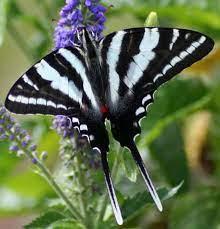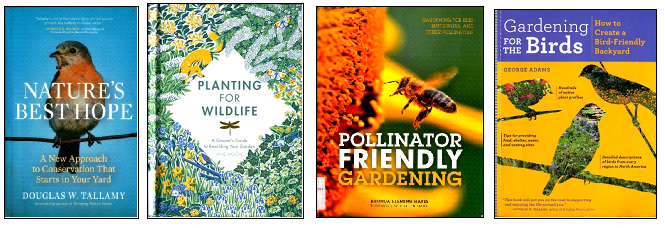
Why Native Plants?
You may have heard the term “native plants” and seen books or articles devoted to the subject. For us, a native plant is one that was growing in our area before humans began introducing plants from other parts of the country and other parts of the world (exotics). Our native plants evolved here and are an important part of our ecosystems, providing our native animals food, host plants and habitat. Oaks, Redbuds, Dogwoods and Pawpaws are examples of native trees that support our local animals and insects. Just as the Monarch Butterfly needs milkweed to serve as a host plant for its caterpillars, other animals and insects rely on the native plants that they have evolved with. The striking Zebra Swallowtail butterfly needs Pawpaw trees for its caterpillars to feed upon. No Pawpaw trees no Zebra Swallowtails.

As trees are cut and land developed, the supply of native plants is diminished. This one reason that homeowners are encouraged to plant native plants to help our local critters survive and thrive. Author Doug Tallamy has published two books on this topic: Bringing Nature Home and Nature's best hope : a new approach to conservation that starts in your yard (also available as a book on CD.) Tallamy makes a compelling case for how “homeowners everywhere can turn their yards into conservation corridors that provide wildlife habitats.” The ecological gardener by Matt Ress-Warren explains “how to create beauty and biodiversity from the soil up.” He has many good ideas but he is based in the U.K. so his native plants are not our native plants. Planting for wildlife by Jane Moore also encourages creating habitat though not exclusively with native plants. Moore is also based in the U.K. therefore attention is needed to her recommendations so that you do not end up planting exotic invasive plants (like English Ivy). Non-native flowers can provide nectar and pollen to our local wildlife so include your favorite non-native plants (but not invasive plants), just add natives when and where possible.

An added benefit to planting for native wildlife is that native plants can attract our native pollinators which include bees, butterflies, moths, beetles, and flies. The tomato is native to Central and South America and the European honeybee will not pollinate it. Thank our native pollinators for that task! If you enjoy tomatoes, then thank an insect for the pollination that makes them possible. It is estimated that three-quarters of all fruits and vegetables rely on pollinators. Attracting our native pollinators can benefit your own garden’s fruits and vegetables. Birds eat insects and can help control garden pests. When you help wildlife, you are helping yourself too.

Since native plants evolved in this area, they are well suited to it. This can mean less maintenance and watering. However, one still needs to pay attention to what conditions native plants prefer and locate them accordingly. Fortunately, we have several books that can help you! The southeast native plant primer, Easy care native plants, Natural landscaping, Grow wild, Native plants, shrubs and vines, Essential native trees and shrubs, and Native ferns, mosses and grasses can get your started. A few related titles are: Native alternative to invasive plants and Lawns into meadows: Growing a regenerative landscape. The Native alternative to invasive plants is a good source for information on invasive plants (the ones you do not want to plant.) Invasive plants can take over an area and crowd out plants that you do want. Invasive plants can be very difficult to remove once established, so it is important to know what not to plant. Unfortunately, some nurseries still carry invasive plants. Lawns into meadows can help you reduce the amount of area you need to mow while increasing garden areas and providing habitat. Did I mention that native plants are beautiful? Besides being hardy and relatively low maintenance, they come with an amazing array of blossoms, foliage, and habit, providing color and texture for your yard and garden. Below are a few web links for more information on pollinators, invasive plants, and native plants.
https://www.fs.usda.gov/managing-land/invasive-species
https://www.invasivespeciesinfo.gov/

